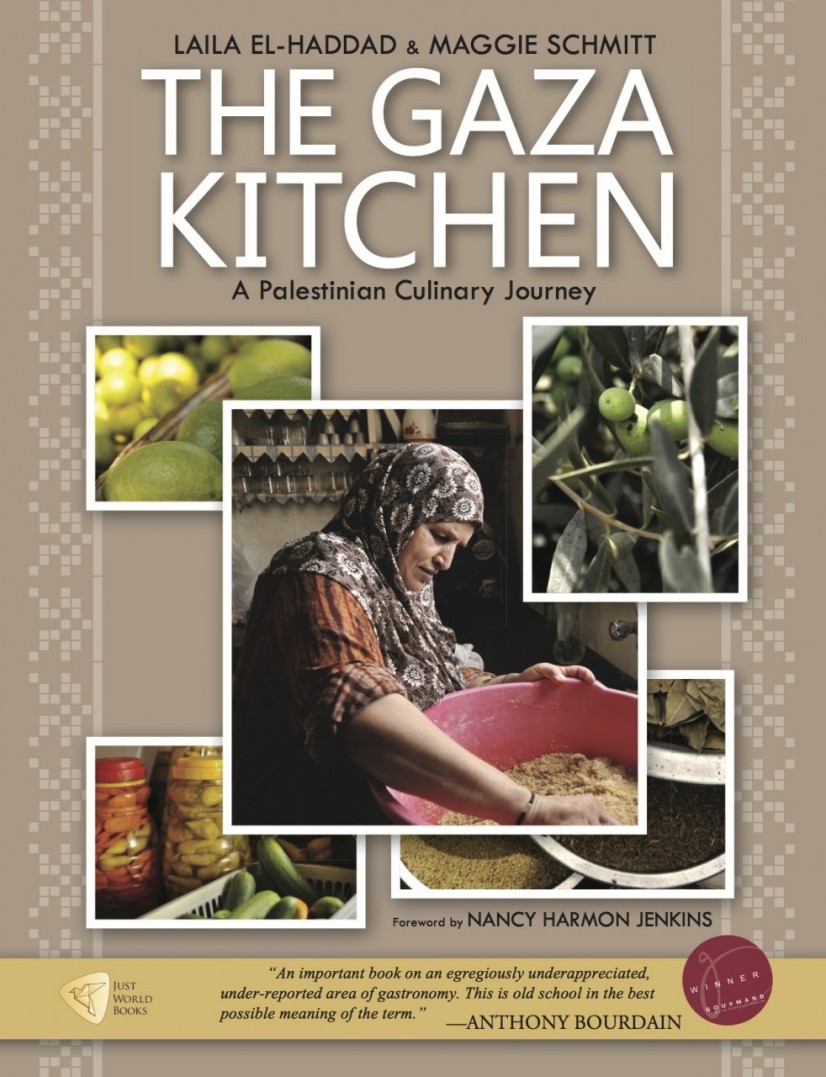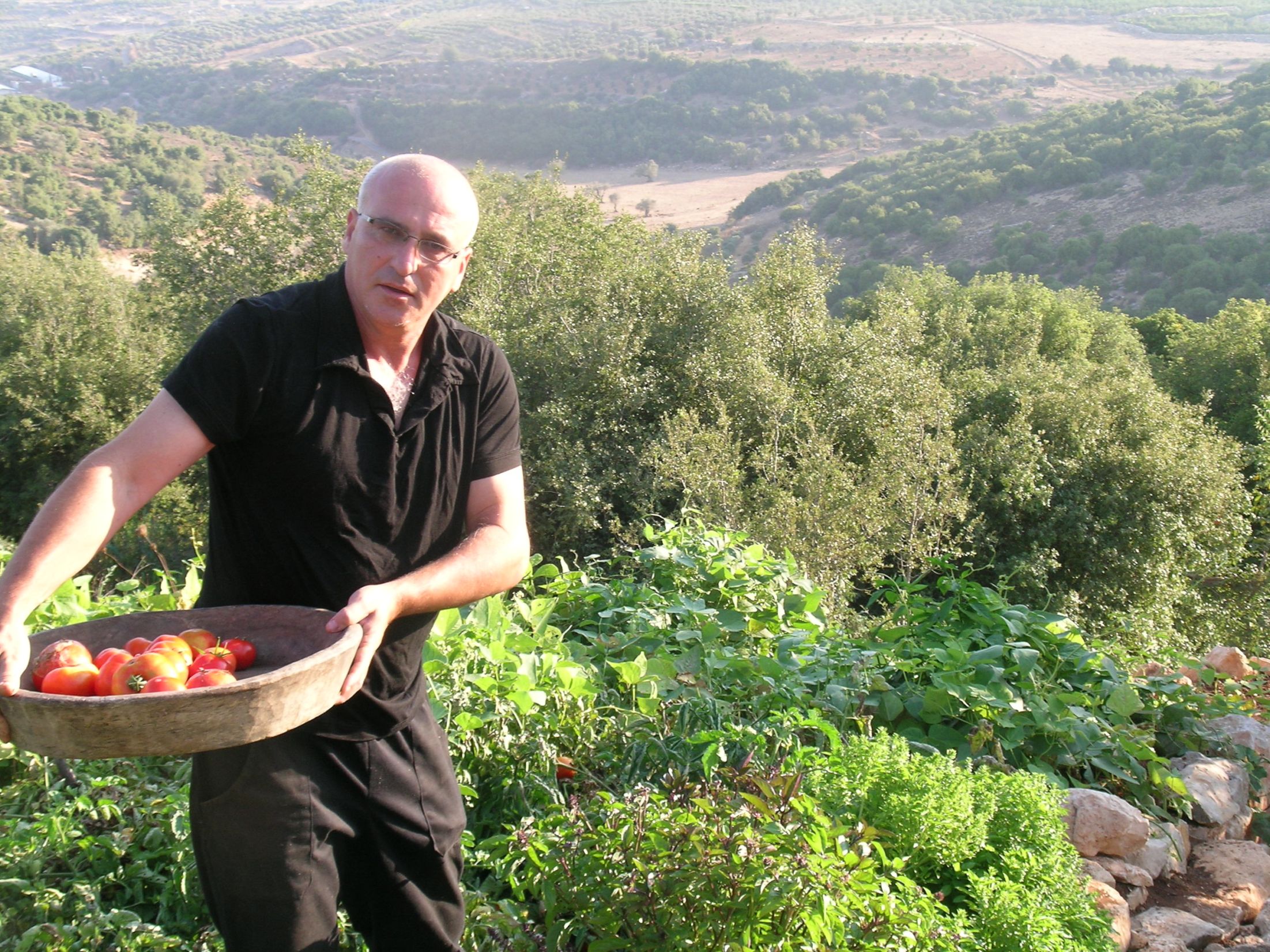 Now that Jerusalem has become one of the best selling cookbooks in recent years, it may be time to look at it in context. The recipes are wonderful, the photographs are mouthwatering, the narrative is compelling and democratic. Beyond food, the book has touched something deeper in all of us. Jerusalem, home to more than 60 religious and ethnic communities, is a lodestar for spirituality, sharing and healing, along with a full measure of continuing strife. So beyond the book's virtues of history combined with recipes, unusual ingredients and flavors, it allows us to hold in our hands a gastronomic overlay to the region's millennial conflicts, through a universal experience that connotes peace and above all, pleasure.
I had the rare opportunity last year to interview authors Yotam Ottolenghi and Sami Tamimi, the former is Israeli, the latter Palestinian, when they came to New York on a book tour. We three sat on the bima in a huge Park Slope synagogue, and gazed upon hundreds of fans who came to listen to their stories and then hungered for more. It was clear to all of us assembled there that their Jerusalem penetrated into a realm far deeper than cooking. The cuisine that the authors express speaks to ancient realities and present truths: The kitchen table knows no boundaries; and no wall, however high and long, can ever be so impermeable to prevent the vapors of the collective culinary consciousness waft through.
Now that Jerusalem has become one of the best selling cookbooks in recent years, it may be time to look at it in context. The recipes are wonderful, the photographs are mouthwatering, the narrative is compelling and democratic. Beyond food, the book has touched something deeper in all of us. Jerusalem, home to more than 60 religious and ethnic communities, is a lodestar for spirituality, sharing and healing, along with a full measure of continuing strife. So beyond the book's virtues of history combined with recipes, unusual ingredients and flavors, it allows us to hold in our hands a gastronomic overlay to the region's millennial conflicts, through a universal experience that connotes peace and above all, pleasure.
I had the rare opportunity last year to interview authors Yotam Ottolenghi and Sami Tamimi, the former is Israeli, the latter Palestinian, when they came to New York on a book tour. We three sat on the bima in a huge Park Slope synagogue, and gazed upon hundreds of fans who came to listen to their stories and then hungered for more. It was clear to all of us assembled there that their Jerusalem penetrated into a realm far deeper than cooking. The cuisine that the authors express speaks to ancient realities and present truths: The kitchen table knows no boundaries; and no wall, however high and long, can ever be so impermeable to prevent the vapors of the collective culinary consciousness waft through.
Just this weekend, I had pleasure of a parallel experience. This time, the talented and ebullient chef, Einat Admony, owner of New York City restaurants Balaboosta, Taim and Bar Bolonat, expressed the food of another diaspora. Vivid dishes -- cooked and served in her Brooklyn loft to a handful of journalists and friends - blended the recipes of her native Iran with Arabic verve, and Israeli cunning. Pomegranate mimosas, spicy Yemenite s'chug, brown-boiled eggs, delectable fried eggplant, osovo (an overnight peasant dish with myriad variations - ours included rice and marrow bones), kubaneh (a slow-cooked Yemenite bread), and malabi (a traditional milk custard) with red fruit conserve for dessert made an emphatically evocative case for "new Israeli cuisine." Best of all, the recipes are easily found in Ms. Admony's beautiful new book Balaboosta published this week by Artisan.
If asked who I'd have come to a last dinner, Yotam, Sami and Einat would certainly be among my guests. But so too would be the five journalists who graced the stage of the Museum of Jewish Heritage on October 6th for an event entitled "Frothed Milk and Truffled Honey." It was a nod to the ebullient creativity that's fermenting in the kitchens of Israel's best chefs. Janna Gur, food writer and publisher of Israel's most prestigious culinary magazine Al Hashulchan, said that the best word to describe the new Israeli cuisine is "fresh." Fresh referring to the abundance of Israel's technicolor produce, fresh referring to the culture's rampant innovation, and fresh also referring to the sassy ingenuity with which chefs there have absorbed culinary influences from the entire region and integrated them into a new, electrifying cuisine.
In 1996, I was one of four "Women Chefs for Peace" on a mission to Israel. Upon my return I wrote an article for the New York Times called "A Region's Taste Commingles in Israel." I predicted then that it was the trend to watch. And now, it's here.

